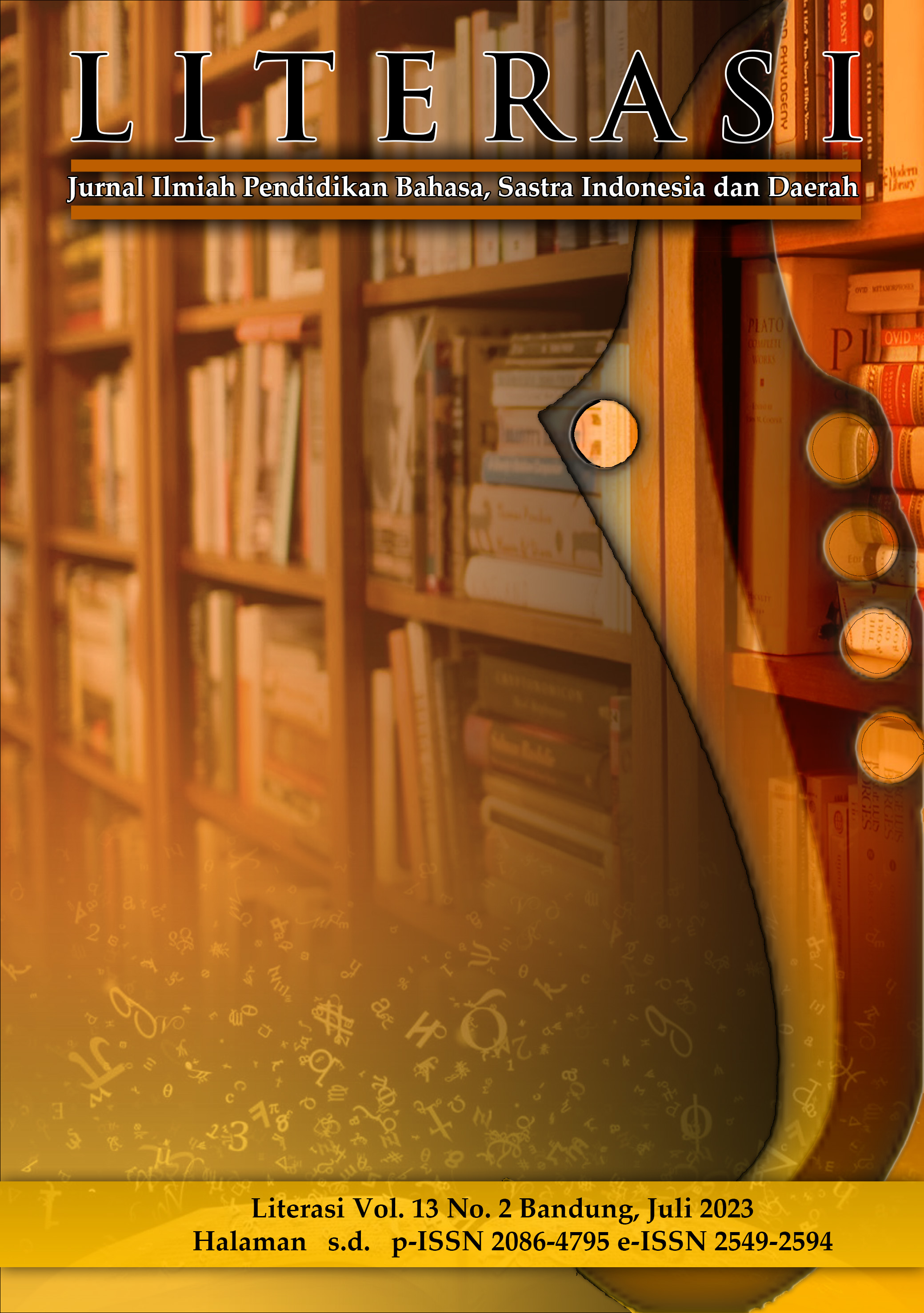UPAYA MENINGKATKAN KETERAMPILAN BERPIKIR KRITIS PADA MATERI TEKNOLOGI PANGAN MELALUI MODEL PEMBELAJARAN RADEC DI KELAS 3 SD
DOI:
https://doi.org/10.23969/literasi.v13i2.8257Abstract
Critical thinking skills are one of the competencies that must be possessed by students in the 21st century. For this reason, teachers need to seek and improve critical thinking skills in learning so that students are accustomed and skilled in critical thinking and have the ability to think critically so that they can solve existing problems. Critical thinking skills can be grown through the RADEC learning model. This study aims to determine the extent to which the RADEC learning model can improve critical thinking skills for elementary school students. This qualitative research uses a descriptive method using data collection instruments using observation data collection methods through observation sheets of students' thinking skills data from the pretest and posttest of learning outcomes. The research subjects were 3rd grade elementary school students. From the results of this study, it shows that the RADEC Learning Model can improve students' skills to think critically, as seen from the percentage increase in each indicator of critical thinking with a significant change from the results of the pretest to the results of the post test.
Downloads
References
Ai Hayati Rahayu, Wahyu Sopandi, Poppy Anggraeni, Tursinawati, Septinaningrum., (2021). Keterampilan Berpikir Kritis Mahasiswa PGSD Melalui Model Read-Answer- Discuss- Explain- and Create (RADEC) Berorientasi Masalah Jurnal Educatio Volume 7, No. 3, 2021, pp.680-686 P- ISSN 2459-9522 E-ISSN 2548-6756
Agnafia. (2019). Analisis Kemampuan Berpikir Kritis Siswa dalam Pembelajaran Biologi. Florea Volume 6 No. 1 (45-46)
Arya Chandra Wiguna, Irma Siti Salamah, Tin Rustini, (2023) Upaya Meningkatkan Berpikir Kritis Siswa Sekolah Dasar dalam Pembelajaran Ilmu Pengetahuan Sosial. DIRASAH Volume 6, Number 1, February 2023 p- ISSN ;2615-0212 I e-ISSN;2621-2838
https: //ejournal.iaifa.ac.id/index.php/dirasah
Basuki Wibawa.,Mardiyah., Jarnawi Afgani., (2019)Metode Penelitian Pendidikan., Universitas Terbuka
Desi Nuzul Agnafia., (2019) Analisis Kemampuan Berpikir Kritis Siswa dalam Pembelajaran Biologi Florea volume 6 no. I, Mei 2019 (45-53)
Evi Susanti.,, Mohammad taufiq., Muhammad Thamrin Hidayat., Machmudah., ( 2019) Kemampuan Berpikir Kritis Siswa SDN Margorejo VI Surabaya Elementary School Through Jigsaw Model Bioedusiana http://jurnal.unsil.ac.id/index.php/bioed/index DOI : https//doi.org/10.34289/285232
Hamdani., M Prayitno B.A., Karyanto P., (2019) Meningkatkan Kemampuan Berpikir Kritis Melalui Metode Eksperimen. Proceeding Biology Education Conference Vol 16 No 1 Hal 139 – 145 p- ISSN : 2528-5742
Nurnaningsih, Citra Bahadur Hanum, Wahyu Sopandi, Atep Sujana., (2023) Keterampilan Berpikir Kritis dan Berpikir Kreatif Siswa Sekolah Dasar Dalam Pembelajaran Berbasis RADEC. Jurnal Basicedu Volume 7 Nomor 1 Tahun 2023 halamn 872-879 http://jbasic.org/index.php/basicedu
Rahmia Tulljanah., Risda Amini., (2021) Model Pembelajaran RADEC sebagai Alternatif dalam Meningkatkan Higher Order Thinking Skill pada pembelajaran IPA di Sekolah Dasar: Systematic Review Jurnal Basicedu Vol 5 No 6 Hal 5508 – 5519 http://jbasic.org/index.php/basicedu
Suparni., (2016) Upaya Meningkatkan Kemampuan Berpikir Kritis Mahasiswa Menggunakan Bahan Ajar Berbasis Integrasi Interkoneksi. Jurnal Devirat Vol 3 No 2 ISBN ; 2407 – 3792 hal 40-58
Wahyu Sopandi dkk., (2021).,Model Pembelajaran Radec: Teori & Implementasi di sekolah., UPI Press http://upipress.upi.edu I E-Mail :upipress@upi.edu
Yanti Yulianti, Hana Lestari, Ima Rahmawati (2022) Penerapan Model Pembelajaran Radec Terhadap Peningkatan Kemampuan Berpikir Kritis Siswa Jurnal Cakrawala Pendas Vol.8 No 1, DOI: https://doi.org/10.31949/jcp.v8I1.19
Downloads
Published
Issue
Section
License
Copyright (c) 2023 Literasi: Jurnal Ilmiah Pendidikan Bahasa, Sastra Indonesia dan Daerah

This work is licensed under a Creative Commons Attribution 4.0 International License.
Hak cipta artikel yang diterbitkan di jurnal ilmiah dimiliki oleh penerbit, bukan penulis. Hal ini berkaitan dengan koordinasi hak akses untuk cetak ulang atau penggunaan lainnya. Dalam hal ini penerbit mempunyai keluluasaan untuk mempublikasikan artikel sesuai dengan kesepakanan Transfer Agreement (penyerahan hak cipta) antara penerbit dengan penulis.















